#south african dog breeds
Explore tagged Tumblr posts
Text

Inktober 2024 no.19 - “Ridge” 🐶
The Rhodesian Ridgeback, a gorgeous, powerful South African dog, initially bred for hunting lions. So the irony wasn’t lost on me when I got attacked by one. Don’t worry, I’m not making a comment on the breed itself, no such thing as a bad breed. It’s just the person who owned them had a few large untrained dogs that would attack house guests. Still got the teeth marks on my thigh to this day.
#inktober#inktober2024#ink#inktoberday19#inktoberRidge#pen and ink#traditional art#black and white#ridge#rhodesian ridgeback#dog#dogs#doggo#canine
17 notes
·
View notes
Text
I forgot about this blog because I didn't know what to post. So, I wrote what is basically an essay about Interfur (working title). Anyways, I'm not a furry, I just really like animals and Interpol.
I guess I should get into the meat as to why I picked these specific animals to be their fursonas, lol. Paul is self explanatory, he is speckled like a leopard, but even if he didn't write that lyric, I probably would've still chose a leopard. I could've picked any yellow spotted cat honestly, but I picked an African Leopard because I honestly like him being African Savanah animals à la Our Love to Admire album cover. I was debating whether to make Paul a jaguar instead sense they're found in Latin America and he seems very connected with Latin American culture, but I picked leopard because I kinda just like them a bit more, personally lol. I was also thinking about African lions, mountain lions, and Servals, lots of cats, but Servals are too lanky and skinny, and lions don't have spots!
I made Sam a spotted hyena literally just because I like hyenas alot, I couldn't really give you a real reason honestly. I mean hyenas are also in Africa (remember OLTA). Also Sam was asked what his favorite still image from OLTA was and he said his favorite was the hyenas sooo. (Daniel and Carlos said theirs was the Otter and I don't even think that was an Otter, I think it was a Weasel of sorts, but this isn't my album so what do I know.) (And Paul said his favorite was the Lesser Kudu, but he didn't even know what they were called, these guys know their animals!)
Daniel is a European Fallow Deer for the same self indulgent reason I made Sam a hyena, I really like deer. I mean Daniel has that look in his eyes like he's about to get hit by a car. And deers are herbivores and Daniel's a vegetarian. I've wracked my brain thinking about an anthropomorphic deer playing guitar with either it's hooves, don't know how that would work, or with human fingers, which just made me uncomfortable. I made him specifically a Fallow deer cause they keep their spots into adulthood and I'm sucker for spotted animals, if that's not obvious.
Carlos is a Borzoi Dobermann Mix because I NEEDED to make him a mixed breed dog okay. At first, I had him as just a dobermann because to me, Carlos is a very angular guy, he's shaped like a rectangle, and dobermanns are very angular dogs, with their pointy ears and their rectangular bodies. Their fur is dark like carlos’ hair too. But then I remembered he's half Columbian and half German, and I'm half south American too, so it just tickled my fancy to make him a mixed breed dog as a homage to him being mixed, like me, this is a projection on my part. Contemplated making him half of a Columbian dog breed but those are just not him. So he's a borzoi, half because I love sighthounds especially borzois, and half because of Gaius, a sighthound. Also borzois have slightly curly fur, and Carlos has naturally curly hair. I put alot of thought into this one. It's like half hedonistic because I love sighthounds, but it also makes alot of sense.
Also if I could make them all African animals, (like OLTA lest I remind you, this was all I was thinking about!) Daniel would be a lesser kudu, and Carlos would be a Melanistic Serval. I literally had an essay this length due on Thursday, and yeah, I didn't get any of it done. Instead, I wrote this, a decadent excuse for me to yap about Interpol and animals, the only things I care about.
#interpol#carlos dengler#paul banks#daniel kessler#sam fogarino#im sorry for essentially abandoning this blog#i didnt know what to post and im intimidated by tumblr for some reason idk#will anyone read this#its nice to yell into the void either way
8 notes
·
View notes
Text

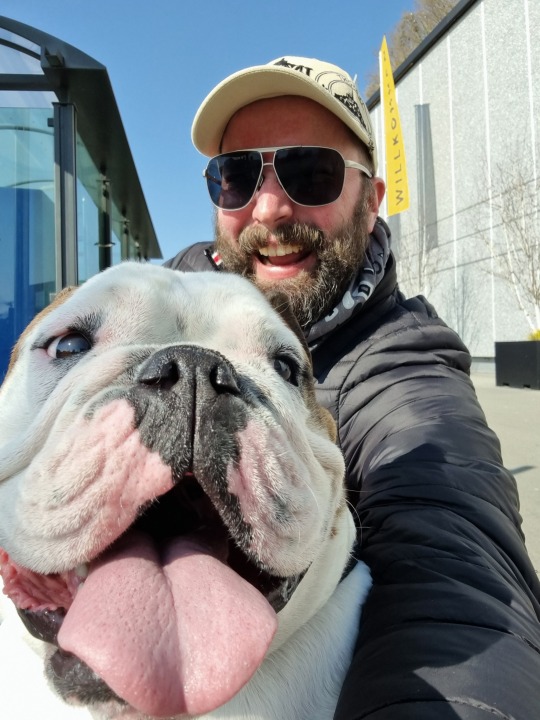
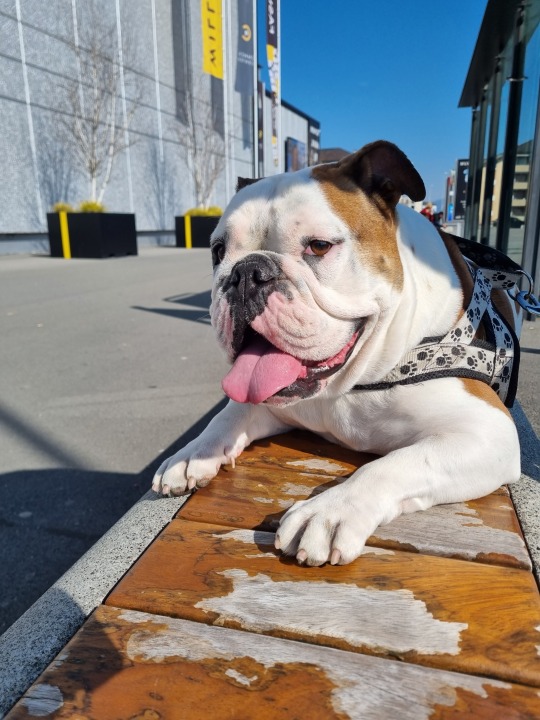
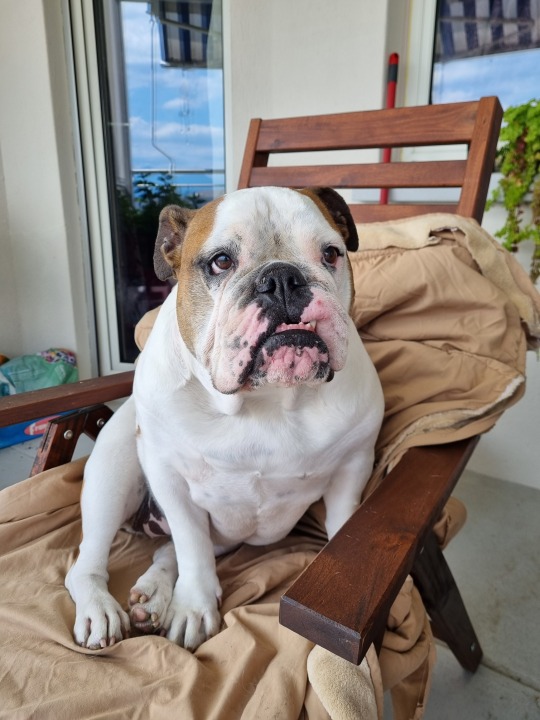




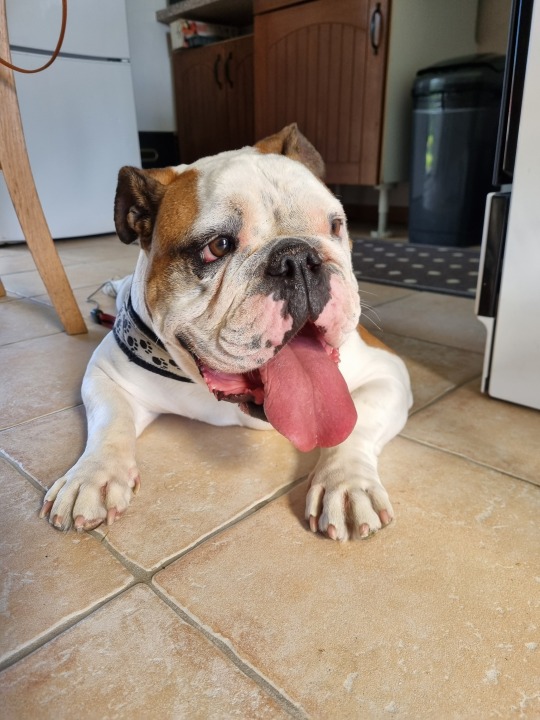
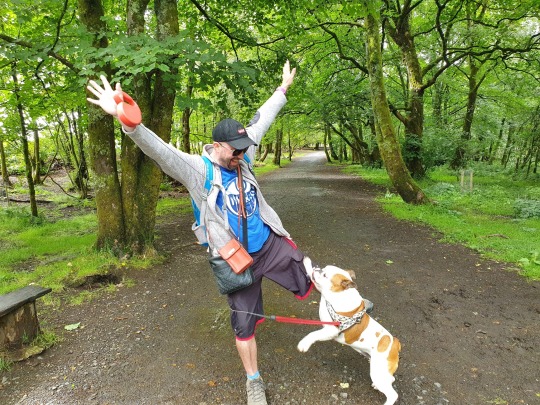
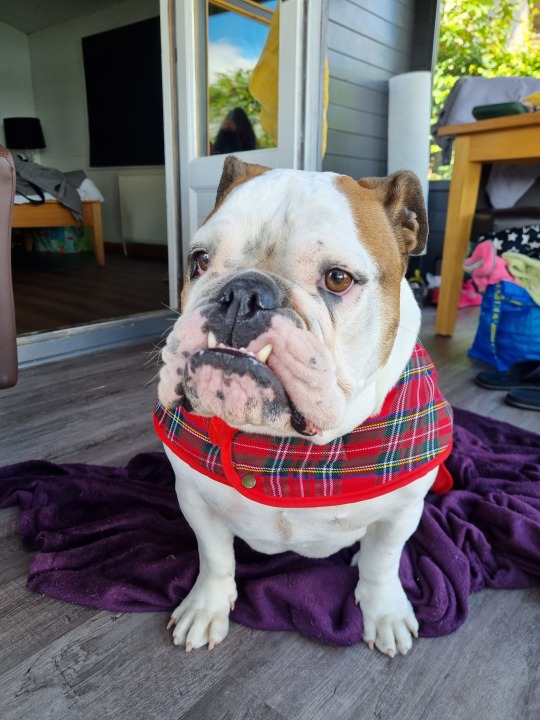

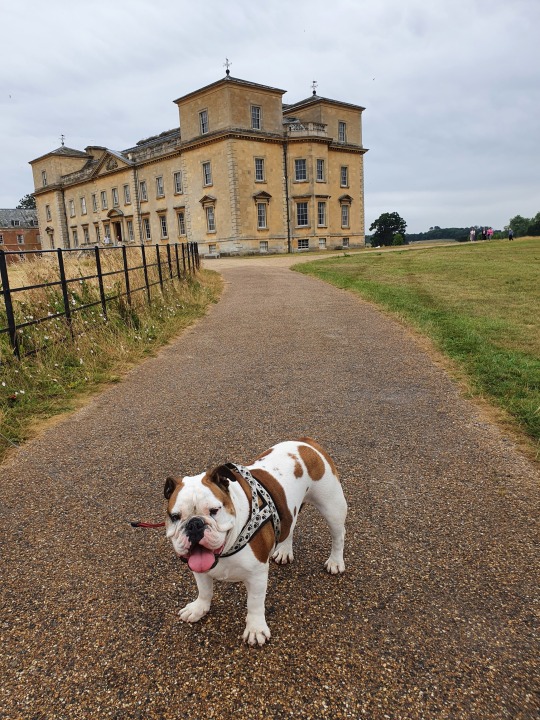
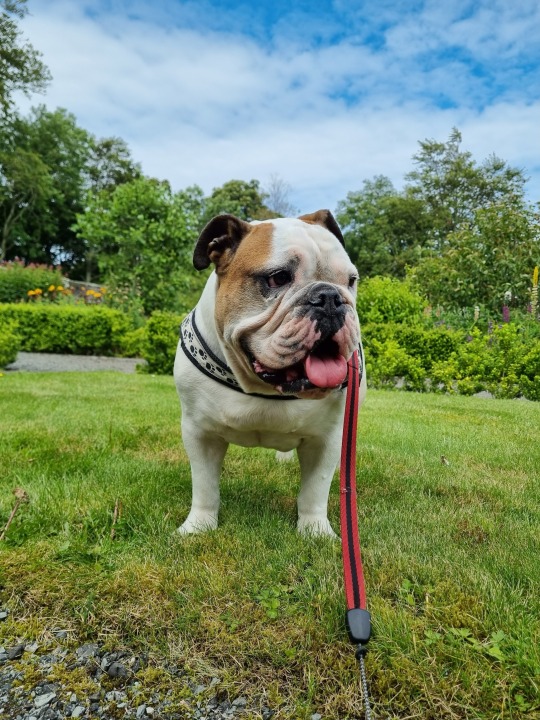
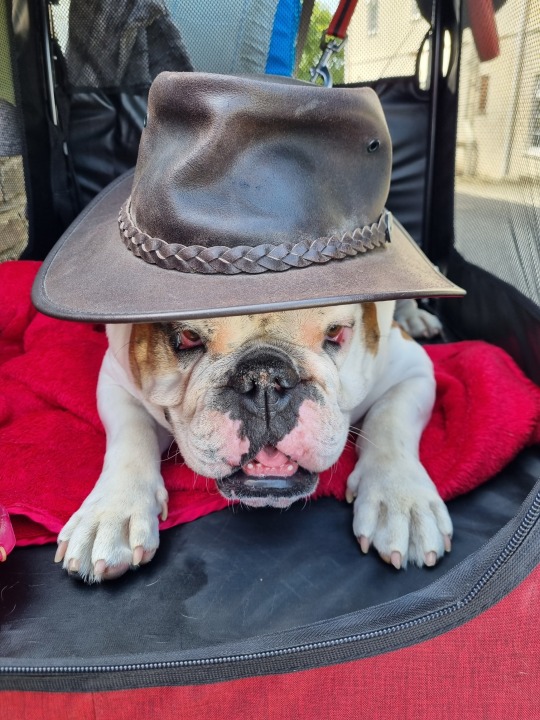

National Dog Day
No one can win hearts like man’s best friend and in honor of this bond between man and canine, Dog Day is celebrated.
Take time to appreciate the love and value that dogs bring to our daily lives, and to do your bit for homeless and abused dogs the world over. From keeping us safe working for the emergency services to supporting people who are blind, deaf, or disabled, dogs do a lot for us humans, and this is an opportunity to give something back.
Learn about Dog Day
No matter how little money and how few possessions you own, having a dog makes you rich.
Dog Day has been created so that all breeds of dogs are celebrated; mixed and pure. The day helps to galvanize the public so that they can recognise the number of dogs that must be rescued on a yearly basis, from pure breed rescuers, rescues, and public shelters.
The day is all about paying tribute to these incredible animals who work selflessly to bring comfort, keep us safe, and save lives. Every day, these animals put their lives on the line. There are dogs that protect our safety and freedom by detecting drugs and bombs, as well as those that pull victims from wreckages and tragic situations. Plus, we have dogs for the disabled, blind, and law enforcement. From these heroic dogs to our family friends, these dogs hold special places in our lives, and so it is only right that we honor them.
Amazing facts about dogs
Let’s take a look at some incredible facts about dogs to help you get a better understanding of these amazing creatures. Did you know, for example, that the most successful hunter in the world is the African Hunting Dog? These dogs are successful in 50 to 70 percent of their hunts. They even hold the Guinness World Record for it. Another Guinness World Record goes to the Saluki for being the oldest dog breed. This breed actually dates back to 329BC. Back then, in Ancient Egypt, these dogs were kept as Royal Pets. There are rumors that this breed can be traced back even further, as there are carvings located in the South of Iraq of a dog that looks very much like this breed and they can be dated back to 7,000 BC. Pretty incredible, right?
Did you know that dogs have three eyelids? This is something a lot of people do not realize about their furry friends. The third lid is a nictitating membrane, which is known as a haw. It is important for ensuring the eye is lubricated and protected. There are also some distinct features that are associated with specific breeds of dogs. For instance, Shar-Peis and Chow Chows have black tongues. Also, 30 percent of Dalmatians are deaf in one ear. Also, did you know that if a cheetah and a greyhound were to go head-to-head in a long-distance race, a greyhound would win? This is because greyhounds boast exceptional long-distance speeds. They can keep up a pace of 35mph for as long as seven miles.
Inspiring hero dogs
It is only right that we give a mention to some of the world’s most inspiring hero dogs in honor of Dog Day. In fact, this is something that we like to do every Dog Day – read up about tales where dogs have done incredible things – and we recommend that you do the same too. It can be incredibly eye-opening and very heartwarming.
Let’s begin with Killian, a Labrador Retriever who saved his little friend from prolonged abuse. Jordan and Benjamin Hope had hired a babysitter for their son after spending some time online researching. They were so confident with their selection that they decided to hire the babysitter for five months. However, Alexis Khan was not the incredible babysitter she made out to be. She would slap the baby and constantly scold him. The abuse would have gone on for at least five months if their dog, Killian, did not warn the couple. Whenever the babysitter would arrive, Killian would stick close to the baby and display aggressive behavior toward the babysitter. It caused concern, and the parents decided they would hide an iPhone underneath the sofa to record what was going on. This revealed everything, and if it was not for Killian, they would never have known.
Another amazing story is about a Golden Retriever called Toby. When his owner, Debbie Parkhurst, got a big chunk of apple lodged in her throat, she couldn’t get it out and had to beat her own chest to try and dislodge the apple, but to no avail. Her two-year-old Golden Retriever noticed her despair, and jumped up and down on her stomach to force the apple out, saving her life! There are plenty of other stories just like this only, so we definitely recommend giving them a read. You will be amazed.
History of Dog Day
The love of a dog is a pure thing. He gives you a trust which is total. You must not betray it.
You may be wondering who started this incredible day, and we have Colleen Paige to thank for it. Collen is an Animal Advocate and a Pet & Family Lifestyle Expert. The day marks the date she adopted her first family dog, Sheltie. The day has been adopted around the world, and it is even written into legislation in New York, showing just how important it is.
How to celebrate Dog Day
Recommendations for ways to celebrate Dog Day range from adopting a dog from a rescue home to giving your dog a holistic spa treatment or even buying yourself and your dog matching t-shirts.
The National Dog Day Foundation supports all breeds and varieties of dogs and discourages purchasing from unethical backyard breeders and puppy mills; instead, support reputable breeders or adopt from rescue homes.
Dog Day has been supported by such high profile individuals as former US President George W Bush whose own dog, Barney the Scottish terrier has his own website and has even starred in a series of short films. So celebrate dogs and their varied talents today, both by taking the time to treat the dogs in your own life and by supporting dogs in need.
You can also celebrate Dog Day by making a donation to an animal charity of your choice. You will probably find that you have a local dog charity or shelter in your local area. All you need to do is a quick search online, and you will discover more about the amazing charities out there that are doing incredible work. There are charities and rescue shelters for dogs without a home, as well as organizations that organize dogs for the deaf, as well as therapy dogs and guide dogs. Making a donation to one of these organizations can make a massive difference.
Of course, you may decide that the best way to do this is to fundraise. In order to fundraise, you purely need an idea that gets everyone involved so that awareness and money can be made. It does not have to be a complicated idea. This is why fun runs and bake sales are so effective. You simply need to make sure that you have something that the community can really get behind. Alternatively, you could decide to take on a challenge and ask people to sponsor you, such as a skydive or walking a certain distance. The options are endless.
It is worth mentioning that fundraising does not have to involve an event of any kind. There are plenty of other ways you can fundraise. For example, you may decide to get a T-shirt personalized and sell them. This could be a T-shirt with some sort of animal quote on it in honor of Dog Day. you could then donate all of the proceeds, or at least a percentage of them, to a dog charity or organization of your choosing.
It is not all about donating money, either. There are a lot of organizations that would appreciate your time just as much. Why not spend the day working with an animal charity or organization? If you are going to be able to donate more of your time in the future, we are sure that this would be greatly appreciated.
Needless to say, another great way to honor Dog Day would be to give a dog a home that really needs it. Your life really does change once you have a dog, and for the better! However, bringing a dog into the family is not for everyone and you may feel that you are not at the stage in your life whereby this is right for you. Plus, you may simply not be able to. Some landlords, for example, do not allow their tenants to have any pets in their homes. If this is the case, why not sponsor a dog instead? By doing this, you will donate a small amount of money per week or month and in return you will help to provide a dog with the home they deserve. You will get updates throughout the year so that you know what your money is going towards and how your dog is doing.
Another great way to spend Dog Day is by watching a dog movie. There are so many great films about dogs, so you should have no trouble finding one that you have not watched before. One of our favorites is the old-classic Old Yeller. If you have not seen this before, we definitely recommend watching it. It is an exemplary coming of age tale. You will go on an emotional journey as you understand the incredible bond between humans and their furry best friends. Of course, you can go for something more fun and less tear-jerking, such as 101 Dalmations. Some other films that we recommend looking into include Heart Of A Dog, Wallace & Gromit: The Curse Of The Were-Rabbit, Lassie Come Home, Lady And The Tramp, Lassie, Isle Of Dogs, Togo, My Dog Tulip, Bolt, Sounder, The Incredible Journey, and Megan Leavey. The latter is about the bond between a young marine corporal and how she saves lives because of the bond she has with her military combat dog. It’s a great movie, and there are many, many more, so get the popcorn in and spend the day binging on some dog films.
Source
#National Dog Day#NationalDogDay#English Bulldog#my brother's dog#InternationalDogDay#26 August#Sushi#pet#original photography#landscape#landmark#vacation#travel#cityscape#seascape#Europa#nature#flora#fauna#animal
2 notes
·
View notes
Text

lilita_yaya
Some #dogbooks I read in the past year. Which of these have you read?
1. "The Invention of the Modern Dog" by #MichaelWorboys is THE book on how #dogbreeds were created in Victorian Britain. Read the sequel #DoggyPeople, too.
2. #Dogopolis by historian, #ChrisPearson. Human-dog relations in 19th century European cities. Not a fun read! Their blog: sniffingthepast.wordpress.com
3. "What Is A Dog?" by #RaymondCoppinger, on #VillageDogs as the original, no-breed, generic dogs of the world.
4. "Breeding Better Dogs" by #PhillipSponenberg is very technical & written for dog breeders (not me). Helpful for understanding breeding-related concepts.
5. #SOSDog by Johan & Edith Gallant. A classic on #landraces. Important food for thought. Many years ago, Edith sent me photos of #Africanis dogs as drawing reference.
6. "How Dogs Work" by Raymond Coppinger. For the chapter on #predatorymotorpatterns.
7. #Dogland by @tommyltomlinson just came out and I read it on the plane coming home from Europe. It's funny and optimistic; kind of like #BestInShow" (the movie) in non-fiction book form.
8. "A Dog's History of America" by #MarkDerr is not an easy read. The making of the USA has been cruel and violent & dogs get dragged into it.
9. #GreyhoundNation by #EdmundRussell looks at the changing niches and phenotype of the British Greyhound. Important note: Breeds change as societies change.
10. "Pit Bull" by @bdickey81 Bronwen Dickey. How we perceive dog breeds, how we label them and talk about them are inseparable from social-cultural prejudices and privileges. An important way to look at dog breed history.
11. #EmpireofDogs by #AaronSkabelund - very academic look at how Japanese dog breeds were created & promoted around WW2 to represent purity, patriotism, and imperialistic ideas. Another piece on how dogs, people, and politics are connected.
12. #CanisAfricanis by Larry Sittert and Sandra Swart. A good chapter on South African breeds & who/what they represent. (The author gifted me with this book for which I am grateful!)
#doglover#dogsofinstagram#fur babies#pets#englishdogs#irishdogs#scottishdogs#dogsoftheworld#dogbreeds#books
2 notes
·
View notes
Text

Protest observer (Walter Gadsden, 17) in Birmingham, Alabama, USA, on 3 May 1963, being attacked by police dogs during a civil rights protest.
On July 11, 2017, a video circulated throughout social media depicting the San Diego police deploying a canine against an unarmed suspect. Posted by a bystander named Angel Nunez, it revealed a large police dog lacerating a Black man’s arm while he was handcuffed and subdued on the pavement. The officers appeared to lose control of the animal, while the man screamed in agony as the dog ripped his flesh. Since the video did not reveal the events leading up to the attack, some viewers suspected the man surely antagonized the animal. Shortly after the original post, however, Nunez provided a second video depicting the preceding events. It revealed no premise for the dog’s attack. The suspect appeared to simply hold his arms in a defensive posture as the dog lunged and tackled him to the pavement.
The image triggered various reactions throughout social media. Though skeptics attempted to explain the procedure, and deny its racial overtones, many believed it manifested yet another example of police brutality. Though police shootings and violent beatings typically dominate mainstream perceptions of police violence, the use of canines to subdue people of color has a deeply racist history that not only engulfs the United States, but much of the western hemisphere.
Scholars note that European colonists brought dogs to the Americas and used them as tools for intimidation and violence against indigenous populations, but the deliberately racialized breeding of canines occurred during the expansion of Black chattel slavery. As slave rebellions erupted throughout the western hemisphere in the eighteenth and nineteenth centuries, a breed called the “Cuban bloodhound” was diffused throughout the slaveholding colonies. Named for the island from which they hailed, they were physically imposing and extremely aggressive. Used in Cuba to confine slaves to the plantations, they were eventually exported to quell Black revolts. The British used them against the Jamaican Maroons in the late eighteenth century and the French engaged their services during the Haitian Revolution in the early nineteenth century.
A few decades later, the US government was engrossed in a lengthy conflict with the Black Seminole Indians in Florida, and military officials followed the French and British examples by importing Cuban bloodhounds to help crush the revolt. Following this event, entrepreneurial white southerners interbred the dogs with local breeds, birthing the occupation of professional slave hunting in the antebellum South.1Cuban Mastiff
The targeting of enslaved men and women was so pervasive that Black authors called them “Negro Dogs,” as the fugitive comprised the most lucrative target for the dogs’ owners. These animals held a prominent legacy in the testimonies of former slaves, as their oral histories recollected stories of pursuit, evasion, and, oftentimes violent, capture. The assault on Black people was so widespread that a reader gains a sense of its normalcy in the literature. According to one former slave from Mississippi, “Some folks treated the slaves mighty bad, put nigger dogs on ‘em” Far from a haphazard practice, the business of hunting Black bodies was ritualized throughout the South.
Emancipation brought little relief. The legal subversion of Black Americans continued after the Civil War and the backbreaking requirements of southern agricultural labor during the Jim Crow period largely mirrored its antebellum predecessor. One 1903 headline entitled, “Slavery in Alabama,” accused southern sharecroppers of developing a system of neo-slavery by preying upon impoverished African Americans who remained in perpetual debt: “Planters in want of labor…paid the fines and took the negroes into slavery, ostensibly to ‘work out’ their fines.”2 Such economic exploitation perpetuated debt bondage that mirrored antebellum slavery, and the report detailed how the workers were treated with “great severity” and received whippings for disobedience. Upon any attempt to abscond from the plantation “they were hunted down in the old slavery day’s fashion with bloodhounds.”3

Being “hunted down” with bloodhounds became a familiar experience for Black fugitives, but canine violence was also used to dismantle peaceful protests in the 1960s. Though the “Dogs of Birmingham” often dominate images of violence during the Civil Rights era, the practice spanned much of the Deep South. In 1963, the New York Times reported that police in Greenwood, Mississippi, a city notorious for its violence against Civil Rights workers, used canines to perpetuate anti-Black oppression. James Farmer, national director of the Congress of Racial Equality, condemned the attack of a Black minister by police dogs, declaring, “When that dog’s fangs sank to the ankle of the young minister…they also sank into the hearts of the Negroes of Greenwood.”4 By the time of the passage of the Voting Rights Act in 1965, canine units had threatened and intimidated Black protestors throughout the South.“The author caught by the bloodhounds.” Illustration from Narrative William W. Brown: An American Slave

Despite the public’s outcry against southern police tactics, the violent images of dogs attacking Black victims did little to curb the persistence of this practice throughout the United States. Though police departments assumed that “many lessons were learned since Birmingham,” largely through better training approaches for handlers and their canines, modern statistics remain quite troubling when viewed through a racial context.
The Los Angeles Police Department (LAPD) is one of the worst repeat offenders. Throughout the 1980s, African Americans leveled complaints that officers jokingly called Black suspects “dog biscuits” as they deployed canines against them. The issue came to a head during the 1991 class action suit Lawson v. Gates, which spotlighted the LAPD’s unlawful use of canines as vehicles of terror and intimidation against minority communities.
Evidence was especially damning, and the plaintiff’s attorneys were able to prove the LAPD deployed dogs principally in African-American and Latino communities, even though “crimes for which dogs are used occur at equal if not greater rates in communities with substantially higher Caucasian populations.”
The case was settled with a monetary payment to 54 plaintiffs, and that the LAPD would institute reform measures for how officers deployed canines. Law enforcement agencies in Los Angeles would later celebrate these reforms throughout the 1990s, claiming bite ratios were markedly down from previous years. However, recent data from the Los Angeles Sheriff’s Department (LASD) provides a vastly different picture.
A recent study from the LASD revealed that canine bites in the Los Angeles area were leveled solely against people of color for the first six months of 2013, and the bite ratios against Blacks and Latinos remain disproportionately high. But these contemporary problems do not lie solely in southern California. Following the killing of Michael Brown in 2014, the Department of Justice (DOJ) uncovered that police units in Ferguson, Missouri, persistently used dogs to attack Black suspects, including teenagers. Ultimately, the DOJ report concluded that Ferguson police “appear to use canines not to counter a physical threat but to inflict punishment.”
Including animals in the histories of racial violence, in both colonial histories and the African American experience, contextualizes how conceptions of race are made, consolidated, and reimagined by human populations. We must realize that enactments of police brutality are not solely human-to-human phenomena, but such state-sanctioned patterns of violence are deeply rooted in American history.
#Police Dogs and Anti-Black Violence#police dogs#violence from police#police violence#police weaponizing dogs#police k9 units weaponized against Black People#Black Lives Matter
6 notes
·
View notes
Text








The blue duiker (Philantomba monticola) is a small antelope species which is native to the African Countries of Angola, Cameroon, Central African Republic, The Democratic Republic of Congo, Equatorial Guinea, Gabon, Kenya, Malawi, Mozambique, Nigeria, Rwanda, South Africa, South Sudan, Tanzania, Uganda, Zambia and Zimbabwe. Here they inhabit rainforests, dry forests, and cloud forests up to 9,800ft (3,000m) in elevation, preferring areas with a dense understory and ground foliage. They are diurnal and cautious animals which live alone or in pairs/ small familial groups and form strict territories that they vehemently mark and defend. Blue duikers primarily feed on Foliage, Flowers, Seeds, Resin, Bark, fruit, & Fungi. They are themselves eaten by hyenas, wild dogs, African golden cats, leopards, crocodiles, baboons, pythons, and chimpanzees. Reaching around 2 to 3ft (55 to 90cms) in length, 13 to 16 inches (32 to 41cms) tall at the shoulder, and 7 to 20lbs (3.5 to 9kgs) in weight, the blue duiker is the smallest species of duiker. They have a flat forehead, large eyes, small ears, short spikey horns, a broad mouth, and agile lips. A row of minute pores surrounded by a few hairs in the preorbital glands near the eyes secrete an opaque liquid which they use to scent mark there territory and other duikers. The tail is dark with rows of white crinkly hairs that reflect light and can be used as luminous signal in the dark. Blue duikers vary greatly in coloration; from blue, to grey or brown, and even black. Blue duikers are monogamous and pair for life. They breed throughout the year. After a 7.5 month pregnancy mothers give birth to a single calf. Under ideal conditions a blue duiker will reach sexual maturity at 8 to 14 months of age and may live up to 16 years.
#pleistocene#pleistocene pride#pliestocene pride#pliestocene#cenozoic#blue#duiker#antelope#blue duiker
3 notes
·
View notes
Text
The Evolution of Cats: From Wild Predators to Domestic Companions
Cats have been a part of human civilization for thousands of years, but their evolution goes back much further. The earliest ancestors of modern-day cats lived over 40 million years ago and were small, tree-dwelling mammals known as miacids. Over time, these creatures evolved into the various species of wild cats that we know today, as well as the domestic cats that have become beloved companions in homes around the world.
One of the earliest known wild cats is the African wildcat, which is believed to be the ancestor of all domestic cats. These cats were originally found in the deserts and grasslands of Africa and the Middle East, where they hunted small prey like rodents and birds. Over time, some of these cats began to associate with human settlements, where they could find a reliable source of food and shelter. These cats were likely valued for their ability to control rodent populations, and were eventually domesticated by humans.
The process of domestication took thousands of years, and is believed to have begun around 10,000 years ago in the Middle East. Early domestic cats were kept for their hunting abilities, but over time they became valued as companions as well. As cats were transported around the world by traders and explorers, they began to adapt to new environments and developed into the various breeds that we know today.
Despite their long history of domestication, however, cats have retained many of their wild instincts. Domestic cats are still skilled hunters and are able to catch small prey like mice and birds. They are also solitary animals by nature, and may be more independent than other types of pets like dogs. However, domestic cats have also developed a close bond with their human companions and are known for their affectionate and playful personalities.
One of the key factors in the evolution of cats has been their ability to adapt to different environments. Wild cats have been able to survive in a variety of habitats, from the deserts of Africa to the rainforests of South America. Domestic cats have also been able to adapt to life in homes and apartments, where they may not have access to the same resources as their wild counterparts. This adaptability has allowed cats to thrive in a variety of settings, and has made them one of the most successful mammal species on the planet.
In recent years, researchers have begun to study the genetics of cats in order to learn more about their evolution. By comparing the DNA of different cat breeds, scientists have been able to trace the ancestry of modern cats back to their wild ancestors. These studies have also shed light on the genetic variations that give different breeds their unique characteristics.
In conclusion, the evolution of cats is a fascinating story that spans millions of years. From their origins as small tree-dwelling mammals to their current status as beloved domestic companions, cats have adapted to a wide variety of environments and have remained one of the most successful mammal species on Earth. Whether they are hunting in the wild or snuggling on a couch, cats continue to captivate and delight people around the world.

2 notes
·
View notes
Text
Five dog breeds you shouldn’t own as a pet, according to a vet
Get the free Morning Headlines email for news from our reporters across the world Sign up to our free Morning Headlines email Sign up to our free Morning Headlines email A vet has given his “brutally honest” advice about the five dog breeds that he would advise pet owners to think twice about owning. In a divisive new video, which has three million views on TikTok, South African vet Amir Anwary…
0 notes
Text
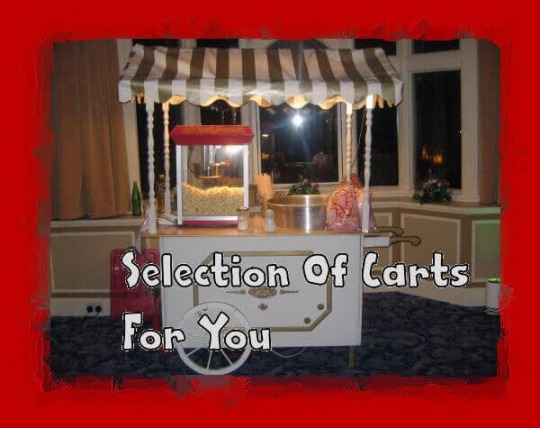
Over the years we have come across a multitude of questions about candy floss. Some are quite sensible, others belong in a joke book. We are going to look at, and try to answer some of our favourites. Can Dogs Eat Candy Floss Candy floss in itself isn't harmful to a dog. It is basically pure sugar. However it will lead to a blood sugar spike, then subsequent drop, which isn't the best thing for your pet. Because most breeds tend to be smaller than humans this will be more pronounced, and because dogs aren't used to a sugar intake that high it amplifies the effect. So we wouldn't recommend giving them more than a pinch of floss. Who Invented Candy Floss A dentist. No really, it was a dentist. To be fair, he wasn't just a dentist. He was a political activist, invented a method to purify Nashville's water supply, wrote children's books and invented a lard substitute. William J Morrison really was a dentist. He didn't invent candy floss per se. Cooks had been making spun sugar for hundreds of years. What he did invent was the electric candy floss machine. Or as he called it then fairy floss. This enables large quantities of floss to be made very quickly. Previously making spun sugar was a tedious affair, suitable for topping small cakes and the like. He debuted his machine in 1904 at the St Louis World Fair. It was an instant success, he sold 68,655 boxes of the stuff at $0.25 a pop. That's the equivalent of selling $500,000 worth allowing for inflation. Why Do Some People Call It Cotton Candy If you call it cotton candy you are most probably from North America. Which is a little strange, because they originally called it Fairy Floss. Sometime after thew switched to Cotton Candy. The Australians and New Zealanders still refer to it as Fairy Floss. Us Brits Candy Floss, The South Africans Tooth Floss, though the Afrikaners call it Spookasem (Ghosts Breath). The French barbe a papa (Daddy's Beard), Dutch Suikerspin (Sugar Spider), and the Persians Pashmak (Wool Like). So the name all depends on where you come from. Is Candy Floss Bad For You We once read that there are no poisonous substances, just poisonous doses. For instance, water is widely regarded as one of the healthiest things you can partake of. However drink too much and you die. Candy Floss is the same, sugar, pretty much all it is made of, other than a minute trace of colouring. Is one of the basic requirements for life. No sugar in your body and you end up dead. So a little candy floss won't do you any harm. If you eat nothing but floss, then you will become really fat, lose most of your teeth, and can trigger sugar diabetes. So our tip is everything in moderation. Can I make Candy Floss At Home You certainly can, chefs have been making it for hundreds of years. A simple recipe is available here. You can also buy cheap little electric machines that make it in the same way as the commercial machines do. Truth be told they are not very good, but they do work well enough for a kids party or similar. Does Candy Floss Go Off Not really. Bacteria, which is usually responsible for food spoiling, doesn't like sugar rich environments. This is why throughout history sugar has been used to preserve food. You can't get much more sugar rich than candy floss. Additionally the heat generated to make the floss, around 186 Celsius. Makes sure that the floss is pretty much sterile as it is being made. However, what does happen, is that the floss gradually absorbs moisture. This leads to it shrinking back into its sugar form, so after a while you end up with a coloured sugar lump instead of a bag of floss. Happily popping it in the freezer means it will last months. The best bit is, you can eat it straight from the freezer as it doesn't actually freeze. The cold air doesn't contain moisture so it extends the life. Is Candy Floss Halal It can be. The ingredients are sugar, and basic colouring flavourings. Now sugar is just pure sugar so no problems there. The flavourings and colouring depends on what exactly is used. Red colour tends to contain the powdered shell of a species of beetle. Called cochineal it is a species native to North America. Alternatives are available, but if you want to be 100% sure then just eat white candy floss. That is made with nothing but sugar, and Silver Spoon brand is both halal and kosher. Where Do I Buy Candy Floss Near Me Any local funfair will sell floss. Many supermarkets have small tubs available. Or there are mail order sellers. How Is Candy Floss Made A band of happy pixies live in the bottom of the machine, merrily knitting the sugar in to candy floss and pushing it through the little holes in the centre of the machine for the operator to collect with a stick. Of course some people claim there is a scientific explanation, personally we like the one above, but if you are one of those boring grown ups who think magic isn't real, here is an alternative explanation. The sugar mixture is poured into a rotating drum. The high speed of the drum forces the mixture against a wire mess around the perimeter. This mesh is heated to 186 degree celsius. This heat breaks the bonds of the constituent molecules (carbon, oxygen and hydrogen C12H22O11). The hydrogen and oxygen atoms form molecules of water, which instantly evaporate due to the intense heat. This leaves only carbon behind, which burns and begins to caramelise the sugar. As it caramelises the liquid sugar is forced through the tiny holes in the mesh and solidify as they meet cooler air. As this is happening thousands of times a second. You get a mass of candy floss composed of these filaments which are just 50 microns in diameter. Why Is Candy Floss Pink Actually it isn't. Pure candy floss is white. The only ingredient is sugar. For other colours of candy floss you add a tiny amount of colouring. So it can be pink, blue, green, orange, yellow, purple and so on. It tends to come out as pastel colours, so you dont really get a deep red, it comes out pink. Does Candy Floss Have Gelatin In As a general rule no it does not. But, you would need to know the food colouring ingredients list used to change it's colour. There are literally hundreds of different food colourings out there, so some may contain gelatin. To be absolutely safe, eat white candy floss, as this is entirely pure sugar. What Goes Well With Candy Floss Far and away the most popular is popcorn. The two can be combined on a single cart and are ideal for weddings, parties or events. Victorian Catering Cart Read the full article
0 notes
Text
Start an exciting journey through the animal kingdom to find creatures that start with the letter X. You'll meet the African ground squirrel, known as the Xerus, and the mysterious Xoloitzcuintli, a dog without hair from Mexico. This article will show you the amazing variety of X-animals. You'll learn about their looks, how they act, and where they live. This will make you appreciate nature's beauty even more. Key Takeaways Discover the four species of African ground squirrels, known as the Xerus genus. Learn about the Xenarthra superorder, which includes 37 species of armadillos, sloths, and anteaters found in the Americas. Explore the Xinjiang Ground Jay, a threatened bird species from China that is as large as an adult human hand. Uncover the Xanthippe Shrew, a species of shrew found in Africa that belongs to the Soricidae family. Dive into the fascinating world of the Xoloitzcuintli, a 3,000-year-old hairless dog breed native to Mexico. Introduction to X-Animals The animal kingdom is vast and full of creatures that amaze us. Among them, a special group catches our eye – those that start with the letter "X." From the African Clawed Frog to the Xanthippe's Shrew, these animals starting with x show us the beauty of exploring animal diversity and the unique x-animals that live among us. Importance of Exploring Diverse Species Learning about unique x-animals is important for many reasons. It helps us understand their biology, behavior, and role in nature. This knowledge lets us see how all living things are connected and supports our efforts to protect the environment. Overview of Animals Starting with X The list of animals starting with x includes many types of species. You'll find mammals, birds, reptiles, amphibians, fish, and invertebrates. Creatures like the Xanthippe's Shrew and the Xenarthra superorder show how different they can be. Some examples are the Xingu Corydoras, a small fish from the Amazon, and the Xantus' Murrelet, a seabird from North America. Animals like the Xerus, an African ground squirrel, and the Xoloitzcuintli, a Hairless Dog from Mexico, highlight the diversity of life. By learning about these unique x-animals, we can better understand the exploring animal diversity and how everything in our world is connected. Xenopus: The African Clawed Frog The African Clawed Frog, known as Xenopus, is a unique frog found in Sub-Saharan Africa. It's classified as "Least Concern" by the IUCN, which helps conservation efforts in its habitats. Physical Characteristics and Habitat The Xenopus frog stands out with its unique features. They can grow up to 12 cm long and weigh 60 to 200 grams. These frogs live in many parts of Sub-Saharan Africa and are also found in North America, South America, Europe, and Asia. Unique Behaviors and Adaptations Xenopus frogs can adapt to many environments. They survive droughts by burrowing into the mud and staying dormant. This shows how adaptable they are. They also have a special way of reproducing, laying eggs when conditions are right. This helps them succeed in different places. These frogs can live up to 16 years in the wild and up to 20 years in captivity. This is longer than many other frogs. Even though they're found in many places, the Xenopus frog is also an invasive species in some European countries. This shows how it can affect local ecosystems. On the other hand, scientists use the Xenopus frog a lot in research. It's a popular model for studying biology and medicine. https://youtube.com/watch?v=7uiJR53XJv8 "The African clawed frog is a remarkable amphibian species that has adapted to thrive in diverse environments, showcasing its resilience and adaptability." Horseshoe Crab (Xiphosura) Contrary to their name, horseshoe crabs (Xiphosura) are more closely related to arachnids, such as scorpions and spiders, than to true crustaceans. These living fossils have a remarkable lineage,
tracing their origins back to a common ancestor that lived during the early Cretaceous period, over 135 million years ago. The fossil record of horseshoe crabs extends even further, with evidence of their existence dating back approximately 445 million years. This makes them one of the oldest surviving arthropod species on the planet, predating dinosaurs by around 200 million years. Today, there are only four extant species of horseshoe crabs, found in the coastal waters of North America and Asia. Horseshoe crabs are unique marine invertebrates that exhibit a range of fascinating characteristics. Their genome size, around 1.72 Gb, is believed to result from multiple rounds of whole genome duplication events. This has led to the presence of an increased number of Hox genes, which play a crucial role in their development and evolution. These ancient arthropods are known for their distinctive appearance, with a large, rounded carapace and a long, spike-like telson (tail). They can reach up to 60 cm in adult length, with their Paleozoic ancestors often being much smaller, ranging from 1 to 3 cm long. Horseshoe crabs have up to four eyes, including two compound eyes on the side of their prosoma, and a well-developed circulatory system containing haemocyanin. Horseshoe crabs are an integral part of the coastal ecosystems they inhabit. They migrate to shallow waters to mate, with females laying around 200 to 300 eggs at a time. These eggs are a crucial food source for migratory shorebirds, particularly in the Delaware Bay. Additionally, the unique enzyme found in horseshoe crab blood, Limulus amebocyte lysate (LAL), is widely used in the biomedical industry to test for endotoxins, ensuring the safety of medical equipment. Despite their ancient lineage and ecological significance, horseshoe crabs face threats from human activities, such as the collection of their blood for the LAL industry. Conservationists are working to find synthetic alternatives to protect these living fossils and the shorebird populations that depend on them. CharacteristicValueFossil recordAround 445 million years oldExtant species4Genome sizeAround 1.72 GbHox genes43 in C. rotundicauda, 36 in T. tridentatusWhole genome duplication eventsAt least twoMaximum adult length60 cmNumber of eyesUp to 4Eggs laid per cluster200-300 In conclusion, the horseshoe crab (Xiphosura) is a remarkable and ancient marine invertebrate that has captured the fascination of scientists and the general public alike. Its unique characteristics, evolutionary history, and ecological significance make it a truly remarkable and valuable species to study and protect. Mexican Hairless Dog (Xoloitzcuintle) The Xoloitzcuintle, also known as the Mexican Hairless Dog, is a unique breed with deep roots in Central America. It has been a key part of Mayan society for centuries. This breed is not just a pet but also holds deep spiritual and symbolic value. Ancient Origins and Cultural Significance This breed's history goes back thousands of years. It shows that the Xolo was domesticated over 3,000 years ago. In Mayan culture, the Xolo was seen as a sacred guide for the dead's souls to the underworld. These dogs were often buried with their owners, showing their deep importance. Today, the Xoloitzcuintle is still celebrated as a symbol of Mexico. It has even been featured in the hit Disney/Pixar film Coco, making it a beloved icon. Physical Features and Temperament The Xoloitzcuintle stands out for its unique traits, like being either hairless or coated. It has a muscular, athletic body and comes in three sizes: standard, intermediate, and miniature. The breed is recognized by the Fédération Cynologique Internationale. It's known for being calm, attentive, and devoted. This makes it a great choice for families. Genetic studies show it's closely related to Old World dogs, highlighting its ancient origins and global importance. The Xoloitzcuintle is a symbol of Mexico's culture and a cherished pet worldwide.
Night Lizard (Xantusiidae) The Night Lizard, or Xantusiidae, is a fascinating group of small, secretive lizards. They live in limited areas, such as Baja California, Cuba, and Central America. These reptiles have caught the attention of scientists and nature lovers. They are known for their unique traits and how they adapt to their surroundings. Species and Geographic Distribution There are three main night lizard species in the Xantusiidae family. Each lives in a different area. The Sierra Night Lizard (Xantusia vigilis sierrae) calls the southwestern foothills of the Sierra Nevada Mountains in California home. The Desert Night Lizard (Xantusia vigilis) thrives in the dry lands of the southwestern United States and northern Mexico. The Cuban Night Lizard (Cricosaura typica) is only found in Cuba. This shows how diverse the lizard species in the Xantusiidae family can be. These lizard habitats vary from rocky areas and open grasslands to dense forests. This variety shows how well these creatures can adapt. Night Lizard SpeciesGeographic DistributionConservation StatusSierra Night Lizard (Xantusia vigilis sierrae)Southwestern foothills of the Sierra Nevada Mountains, CaliforniaCritically ImperiledDesert Night Lizard (Xantusia vigilis)Southwestern United States and northern MexicoLeast ConcernCuban Night Lizard (Cricosaura typica)CubaEndangered The Xantusiidae family shows how diverse and adaptable these night lizard species are. Their unique traits and how they live in different lizard habitats highlight their evolution and strength. Sabine's Gull (Xema sabini) The Sabine's gull, also known as the Xema, is a unique seabird. It was first found in 1819 by Joseph Sabine. These birds live near the Northern Pacific Ocean, sometimes going as far south as Baja California. They are 27 to 33 cm long and weigh 135 to 225 g. Sabine's gulls have a wingspan of 81 to 87 cm. Their white and black feathers and high-pitched call make them stand out. There are slight differences in Sabine's gulls depending on where they live. Those in Alaska are darker and bigger. They are most like the ivory gull, with a split of about 2 million years ago. These gulls breed in the Arctic of North America and Eurasia. They nest on the ground with grass. They eat many things, like insects, crustaceans, fish, and young birds. Sabine's gulls migrate across the globe, not just along coasts. They can be seen inland in North America, Europe, and Siberia. This makes them different from other gulls. Even though they live in many places, Sabine's gulls are not considered endangered. They are listed as "Least Concern" on the IUCN Red List. Learning about this Arctic gull helps us appreciate the variety of birds on Earth. animal that starts with x The South African Ground Squirrel, also known as the Cape Ground Squirrel, is a unique and fascinating creature. It lives in parts of Southern Africa, like Botswana and Namibia. These squirrels look a bit like tree squirrels but live on the ground. Social Structure and Habitat This species is very social, living in big groups underground. They have a complex social life, with families and friends doing things together. They work together, like staying alert, cleaning each other, and sharing food. The Xerus inauris loves dry places like savannas and deserts. Their homes are underground burrows in sandy or rocky soil. These burrows are big, with many doors and rooms, keeping them safe from danger and the weather. CharacteristicDescriptionBody LengthApproximately 12-15 inches (30-38 cm)Weight2-3 pounds (900-1400 grams)HabitatDry, arid environments like savannas and semi-desertsSocial StructureHighly social, living in large colonies underground The South African Ground Squirrel is a great example of how diverse and interesting nature can be. Its social life and how it lives in the desert make it truly unique. Streaked Xenops (Xenops rutilans) The streaked xenops, known as Xenops rutilans, belongs to the ovenbird family, Furnariidae.
It lives in the tropical forests of South America. Unlike many birds, it stays in its home all year round. The IUCN says the streaked xenops is of Least Concern. It has a big population of over five million adults. It lives from Costa Rica and Trinidad down to Bolivia and northern Argentina. There are 11 subspecies, each in its own area. This bird is small, about 12 to 13 cm long and weighs 10 to 15 g. It has a unique brown and rufous-brown look. It lives in high forests, from 700 to 2,400 m up. It eats mostly insects, like beetle larvae and adult bugs. Its song is high-pitched and goes up and down. It also makes sounds like "peet" or "cheet." In Costa Rica and Trinidad, it breeds from January to May. It builds its nests in tree cavities, 1.5 to 9 m up, and lays 2 or 3 eggs. There are no big threats to this bird right now. It can live with some changes to its home. The Xenops group has three species, all considered Least Concern by the IUCN. Sunbeam Snake (Xenopeltis) The Sunbeam Snake, known as Xenopeltis, includes three shy snake species. They live underground and have scales that shine in bright colors. This makes them look like they're surrounded by sunlight, hence the name "Sunbeam Snake." Species and Distinctive Features The Xenopeltis unicolor is listed as Least Concern by the IUCN. These snakes live in Southeast Asia and parts of Indonesia. They can grow up to 1 meter long. Their scales shine brightly, making them stand out. Behavior and Habitat Sunbeam snakes prefer open spaces like forests, gardens, and parks. They also like living in rice paddies. These snakes are non-venomous and eat frogs, reptiles, and small mammals. They are great at digging and spend a lot of time underground. This makes them hard to see. "The Sunbeam Snake, with its captivating iridescent scales, is a true marvel of nature. These elusive burrowers are a testament to the incredible diversity of the animal kingdom." Scientific NameCommon NameDistributionDistinctive FeaturesXenopeltis unicolorSunbeam SnakeSoutheast Asia, IndonesiaIridescent scales, non-venomous, excellent burrowers Xantus' Leaf-toed Gecko (Phyllodactylus xanti) The Xantus' Leaf-toed Gecko is a small, skittish reptile found in northwestern Mexico's deserts and shrublands. It is known as the phyllodactylus xanti or xantus' leaf-toed gecko. This mexican lizard is only found on the Baja California Peninsula and its islands. This skittish reptile is tiny, measuring 2.5 to 6.2 cm (1.5 to 2.5 inches) long. It likes to be alone. When scared, it will squeak and drop its tail to get away. The phyllodactylus xanti is not considered endangered, with four subspecies: acorius, sloani, xanti, and zweifeli. It was named after John Xantus, a naturalist. The names honor herpetologists who studied this unique gecko. CharacteristicDescriptionConservation StatusLeast Concern (IUCN 3.1)Geographic RangeEndemic to northwestern Mexico, found in the Baja California Peninsula and associated islandsHabitatPreferred natural habitats are desert and shrublandSizeRanges between 2.5 and 6.2 cm (1.5 and 2.5 inches) in snout-to-vent length (SVL)ReproductionOviparousSubspeciesFour recognized subspecies: acorius, sloani, xanti, and zweifeli Many species, including the xantus' leaf-toed gecko, were named after John Xantus. He was a naturalist who sent many specimens to famous biologists. Other creatures named after him include the Xantus's Murrelet and the Xantus' hummingbird. Xanthogramma Sandperch (Parapercis ramsayi) In the vibrant coral reefs and rocky floors of Fiji, Tonga, and Western Samoa, the Xanthogramma Sandperch lives. This fish is known for its leopard spots. These spots help it hide and catch small fish and invertebrates. This fish is a great hunter. It blends into its surroundings perfectly. Its spots help it sneak up on prey, making it a successful hunter in the coral reef. The Xanthogramma Sandperch (Parapercis ramsayi) is
a bony fish found on rocky floors and coral reefs off the coasts of Fiji, Tonga, and Western Samoa. This leopard-spotted fish is known for its intricate camouflage, which helps it ambush small fish and invertebrates, its primary prey. The Xanthogramma Sandperch's unique appearance and hunting techniques make it a fascinating species within the coral reef ecosystem. The Xanthogramma Sandperch shows how diverse marine life is in coral reefs. These reefs are under threat, so we must protect species like this fish. This helps keep the ocean's balance. Xenarthrans: Sloths, Armadillos, and Anteaters The Xenarthra, or "strange-jointed" mammals, are a group of placental animals found only in the Americas. They include tree sloths, armadillos, and anteaters, each with unique traits. These animals show the amazing diversity and history of South American wildlife. Unique Characteristics and Adaptations Xenarthrans have special bones that help them dig and move underground. This special spine is one reason they are called "strange-jointed." They also have low metabolisms, which suits their slow way of life. Tree sloths save energy by hanging upside-down in the trees. Armadillos have armor that protects them from predators. Anteaters eat ants and termites with their long snouts and tongues. Ecological Importance Xenarthrans are important in their ecosystems. They eat insects, keeping their populations in check. Sloths help forests by slowly moving and leaving behind nutrients. Armadillos dig burrows that help other animals by making the soil better. The Xenarthra group shows how animals have adapted and evolved in South America. Learning about these animals helps us value our planet's natural beauty and diversity. Conclusion In this journey through the animal kingdom, we've seen a wide variety of species that start with the letter X. We met the Xantus Murrelet, a small seabird with unique looks, and the Xoloitzcuintli, a dog breed from Mexico without hair. These X-animals have many special traits and ways of adapting. We saw everything from the tiny Xenoturbella to the huge Xenoceratops dinosaur. This shows how rich and complex the natural world is. These animals amaze us with their special features. They also play key roles in their environments. As we end this journey, we value the wonders of animal diversity more. The X-animals we learned about are just a few of the many species out there. Each one has its own amazing story. By understanding and respecting these creatures, we can help protect their homes and keep our planet diverse. FAQ What are some animals that start with the letter X? Animals starting with X include the Xenopus (African Clawed Frog), Xiphosura (Horseshoe Crab), and Xoloitzcuintle (Mexican Hairless Dog). There's also the Xantusiidae (Night Lizard), Xema (Sabine's Gull), and Xerus (South African Ground Squirrel). Don't forget the Xenops (Streaked Xenops), Xenopeltis (Sunbeam Snake), and Xenarthrans (sloths, armadillos, and anteaters). What is the significance of the African Clawed Frog (Xenopus)? The African Clawed Frog, known as Xenopus, is unique to Sub-Saharan Africa. It stands out with its clawed feet and has special adaptations. These help it survive in its environment. How are horseshoe crabs (Xiphosura) different from other crustaceans? Horseshoe crabs are not like other crustaceans. They are more like arachnids. They go back to a time over 135 million years ago. Their unique traits make them stand out. What is the cultural significance of the Xoloitzcuintle (Mexican Hairless Dog)? The Xoloitzcuintle, or Mexican Hairless Dog, is an ancient breed from Central America. It was important in ancient Mayan society. It's known for its looks and personality. Where can the Night Lizard (Xantusiidae) be found? You can find the Night Lizard in Baja California, Cuba, and Central America. They are small and live in secret. Their unique traits make them different from other lizards.
What are the key features of the Sunbeam Snake (Xenopeltis)? The Sunbeam Snake is a group of snakes that live underground. They have scales that shine in bright colors. This makes them look like the sun, hence their name. What are the unique characteristics of the Xenarthrans? Xenarthra includes tree sloths, armadillos, and anteaters. These animals have special features and adaptations. They play key roles in their habitats.
0 notes
Text
africanis!!🐾

the africanis is a dog landrace (separate from a dog breed; will explain later) originating from southern africa. although theyre often underrated and misunderstood, theyre smart, loving, athletic and tough!


history
the africanis IS a dog but would be classified as a dog landrace instead of a traditional dog breed ૮ฅ・ﻌ・აฅ this is because they developed naturally over time due to environmental factors and natural selection rather than human influenced breeding, or had very little human interference. land races also tend to have a broader genetic base compared to breeds, resulting in greater variability in appearance and traits ᡣ𐭩
the origins of the africanis date back to around 7000 years ago to the dogs that came with the stone age herders from the middle east into africa! even before the egyptian dynasties, domestic dogs spread quickly along the nile river ૮ ᴖﻌᴖა iron-using people from cameroon, from about 200 AD, brought their domestic dogs with them in a massive migration which led to their settlement in southern africa.
the earliest record of domestic dogs in south africa was near the botswana border, dated back to around 570 AD, and have now spread all over the southern african subcontinent. despite some variations in appearance, africanis have been deemed as their own landrace and conservation efforts have been made to spread awareness and protect them. the africanis is known by various names in different languages. thats why most people refer to it by one singular name, africanis!!! ฅ՞•ﻌ•՞ฅ (portmanteau of the words africa and canis (dog))


appearance
africanis are medium-sized dogs with a height about 50-60 cm (20-24 in) slender builds and are well-muscled. ૮ • ﻌ - აᯓ★ theyre super agile and lithe!! they have cone-shaped heads with oval eyes that are usually brown or yellow in colour. they have short, harsh double coats.
since africanis dont have to follow breed standards, their fur come in a wide range colours! their fur can can come with markings (like brindles!!) or without ૮˶- ﻌ •˶ა sometimes a ridge of varying form can be seen on their backs. their ears may be erect, half-erect or drooping.


temperament
africanis are intelligent, affectionate, playful and loyal dogs! theyre loving and get very attached to and protective over their owners, making them good watchdogs!! theyre super obedient and smart too, making them easy to train ૮₍ ´ �� ` ⍝₎ა they have a high prey drive though, so they wouldnt be a good pet to have in a household with a small pet, but theyre good hunting partners!! <3


grooming
africanis have very minimal grooming needs, making them pretty low-maintenance dogs. their coats remains healthy and shiny even with little care! ૮ ˶•⩊•˶ ა brushing about twice a week is enough to keep their fur in good condition! due to their short, dense coat they dont need to be trimmed or anything ദ്ദി૮ ˉ꒳ˉ ა


health
due to very little human interference in their genepool, africanis dogs are generally very healthy and resilient! they have wayyy fewer genetic issues compared to dogs that have been selectively bred ૮( > 〰 < ⑅)ა although there are no specific medical conditions that africanis are prone to develop, regular vaccinations are still required to ensure they stay healthy♡


exercise
africanis dogs are super active so they require quite a bit of exercise. they need to have long walks/runs or high-energy play sessions daily to stay happy and healthy! they also need mental stimulation, such as puzzle toys and obedience training, to help keep them intelligent and mentally sharp ૮ ˶ . . აฅ as stated before they have high prey drives so its best not to let them off leash or they might chase something their not supposed to ૮ •̯́ ^ •̯̀ა


training
as previously mentioned, africanis dogs are intelligent and very loyal which makes them highly trainable! teaching them basic commands and having them socialised as puppies is important for obidience and their development ૮ ᴖﻌᴖა africanis dogs are actually really good in agility training which can provide them both mental and physical stimulation!! ૮ >ﻌ< ა


fun fact: africanis dogs are considered one of the oldest dog breeds of africa since they have roots tracing back thousands of years!!!
sources:
africanis.co.za
🐾
0 notes
Text
Kings Thunder Puppies
When doing a post for the Airedale puppies - Kings Thunder Puppies offers Airedale Puppies for sale. Airedale Terriers come from Yorkshire, England. they are traditionally called the "King of Terriers" because it is the largest of the terrier breeds.
When posting for African Boerboel Puppies - Kings Thunder Puppies offers African Boerboel Puppies. They are a South African breed of large dog of mastiff type and make a great family and guard dog
Website: Airedale Puppies
1 note
·
View note
Text
Sinfonia do Universo
youtube
I did take the Starbucks challenge and sat in an airline hanger every morning that still contracts 90s seattle alt rock over head.....and it is a very dry vacuum people don't know why people are depressed from
I don't completely understand the Starbucks contracts bipolar for support as it can be dehydrating in there from a new left psychiatric perspective
I got an urge to ask Starbucks to re conserve Murrieta creek
Mayor brown of buffalo new York my candidate for the poor when asked by mayor brown what she would do about highway patrol causing poverty explained the upper classes use punishers and may only dream of a lenient sentencing
If the poor could have things like the adobe alliance it would feed upper class egoes to believe their more prestigious and deserving then they are
And so the upper classes can go in there and think about plastic surgery to move to the global south....
I don't know what I am going to do in Temecula....there is like work but no one has given me a place to live so I would have to incriminate people by accepting over activity and I don't want to do that
I don't know if it's safe.....they at least require the families mostly go home here so that's a lot better when there are walls
The water is gone so a lot of the gay stuff is finally told to Marry heteronormatively here....
I had a forced delusion for several years so here I at least could feel free from that....nostalgia this weird repetitive delusion about a positive relation that never ends up real and my life is always literally rock bottom so
The hare Krishnas warned me I might have to go to India to find out who won't stop paying something to curse my life out into the weird show
Its mostly that I want to do something different and I'm sure there is nothing left to do that this is all life is
If I go to mentals I will have a county that wants to force breed me to create an indigenous people no one has any record of
Small child body huge arms to run the ship gunnery
This is the honey this is the taffy and these are the terrier dog pound
Shelters could be a good experience could be abusive I don't really know
Kind of depends whose working sometimes they will want a very skinny first one in the door to abuse people with illegal labor sometimes they have to be cleared out for no you think your okay but neuro biologically the back of your skull has fractures from being left homeless a long time
There is no good in Billy the kidd so if it's those noise bombs deformed babies just for stem cell harvesting it's like joeseph mengele
You can drop your baby off at the fire station
Tex will do it....if it's a north Texas education I could see why Helter skelters had no sympathy or care for upper classes
That's why I'm not afraid of the county that tried to arrest me Tex profiles them as an African American continuity
He may think it was a private conversation but if he does not leave me alone all he worked for could just be gone
I think I will have to just keep being patient.......a lot in my life.....finally went free free from hassle and disease exchange so eventually i will just meet more ladies like amy in truman capote and travel by cleaning up houses a long the way......
A lot of bureaucracy will finally just go away
0 notes
Text
I cut my skin to liberate the splinter (2017)
Kemang Wa Lehulere's significant work, "I cut my skin to liberate the splinter," stands as a culmination of his artistic exploration over the past decade. It mirrors his consistent themes and incorporates found materials reflecting his upbringing in apartheid South Africa. Addressing issues of history, memory, home, exile, longing, and displacement, the piece delves into various aspects of South African history, including the forced removal of black South Africans, exile during apartheid, student uprisings in the 1970s, and the lead-up to the 1994 democratic elections.

The title's explanation by Wa Lehulere emphasizes the poetic act of self-liberation from pain as a gesture of generosity and a longing for freedom. The artwork draws inspiration from the documentary "Cosmic Africa" (2003), which explores African astrophysicist Thebe Medupe's quest for cosmic understanding through ancestral knowledge. Wa Lehulere's work aligns with the historical role of African artworks in preserving and communicating knowledge, as highlighted in the documentary.
I cut my skin to liberate the splinter: Please remember on my behalf 2017 comprises twenty-six porcelain dogs, twenty-four music stands, twenty-four resin-cast hands and six chalkboards, carefully configured in an orchestral-type arrangement.The porcelain dogs, which appear elsewhere in this piece and across Wa Lehulere’s work, are mass-produced souvenirs that, according to the artist, adorn many South African homes (correspondence with Tate curator Kerryn Greenberg, 9 May 2018).
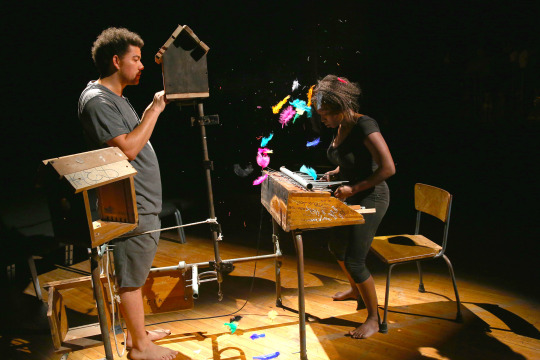
Like many of Wa Lehulere’s chosen materials, the porcelain dogs stand in for a range of experiences, histories and meanings. During apartheid, German Shepherds were the breed of choice for the police; these dogs were trained to be aggressive by their white handlers and were feared and hated by black South Africans. Interspersed between the dogs and music stands are enlarged white resin casts of hands signing the words ‘please remember on my behalf’, alluding to issues around accessibility, but also to empowerment and memory.
Wa Lehulere cast these pieces from the hands of his Aunt Sophia Lehulere, who had been involved in the student uprising of 1976. Wa Lehulere has explained that he intended these hands to be an ‘homage to a larger cohort of students, both those who survived and especially those who didn’t survive the violence’ (correspondence with Tate curator Kerryn Greenberg, 9 May 2018). The chalk drawings on green boards meanwhile represent pedagogy but, with the marks obscured and rubbed out in places, also speak to the fallibility and transience of memory.

[Source: ‘I cut my skin to liberate the splinter: Act 1‘, Kemang Wa Lehulere, 2017 | Tate]
[Picture Source: Robert Wuss - Kemang Wa Lehulere (myportfolio.com)]
0 notes
